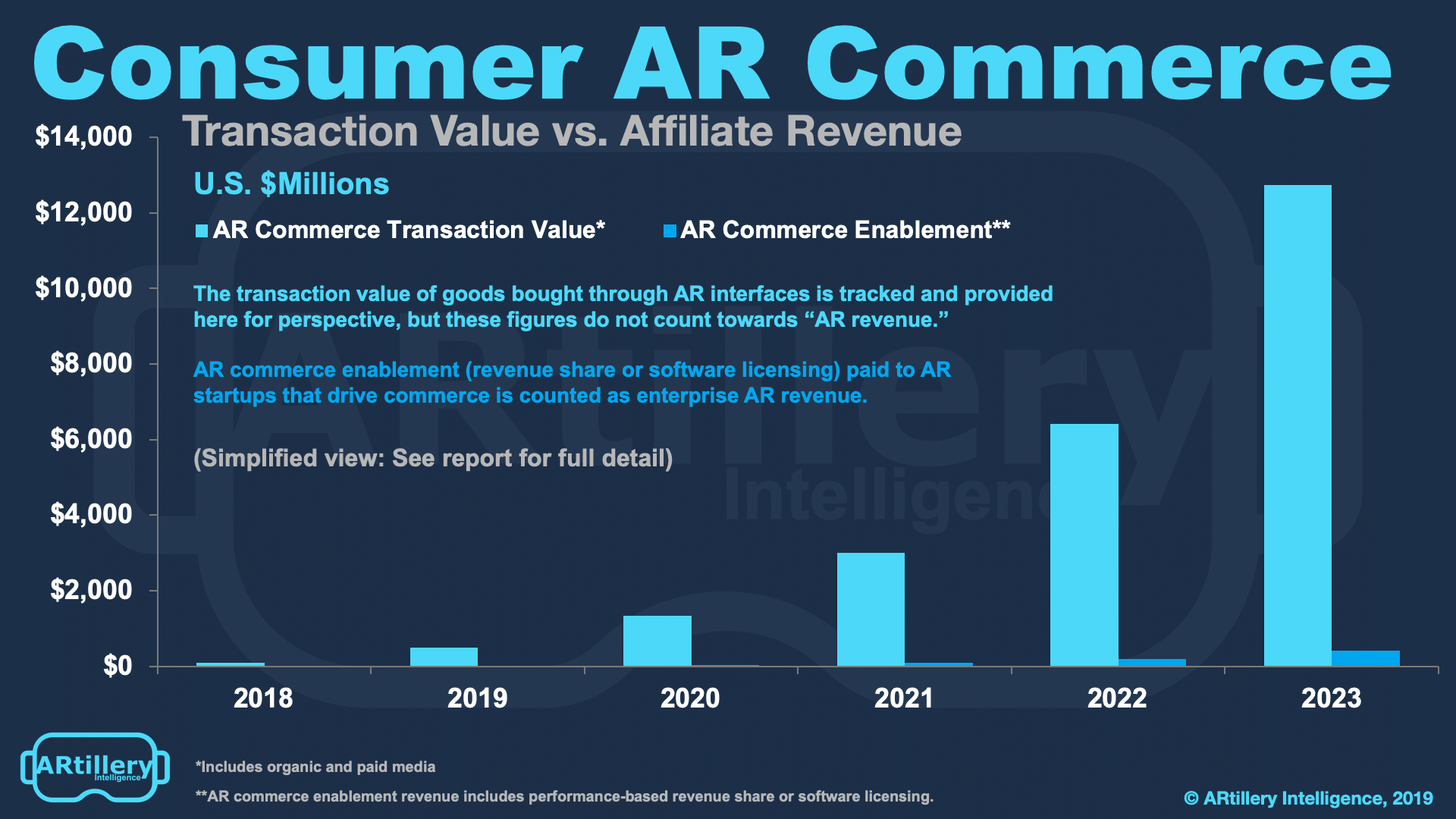
Data Point of the Week is AR Insider’s dive into the latest spatial computing figures. It includes data points, along with narrative insights and takeaways. For an indexed collection of data and reports, subscribe to ARtillery Pro.
As AR continues to find its footing and potential killer apps, there are early signs of monetization in advertising and commerce. That stems from the fact that AR product visualization and “try before you buy” have user appeal/utility and growing interest from brand advertisers.
The latter is already evident from lots of signals we’re tracking such as advertising spend and monetization progress of AR lens innovators like Snap and Facebook. Our research arm ARtillery Intelligence projects $8.8 billion in AR ad revenue by 2023, and $12.7 billion in transaction value.
But going back to the user appeal, AR visualization is a logical solution to traditional pain points in visualizing products through 2D images in eCommerce. But more importantly, that notion is being backed up by metrics that indicate high engagement and ROI relative to traditional benchmarks.

The latest evidence comes from YouTube, which reports 30 percent AR activation from in-stream cosmetics promotions. During how-to videos about MAC lipstick on YouTube’s iOS app, a call to action was offered to activate the front-facing camera and virtually try on different shades.
Besides AR’s continually-validated efficacy, the other lesson here is broadening AR channels. It started with branded apps like IKEA Place, then higher-distribution branded lenses from social giants. Now we’re seeing alternate routes like in-game AR ads, messaging apps and even email.
YouTube could be a powerful addition to that list given massive reach. It also offers a good fit for AR, given that it’s already conditioned the user behavior around product demos and how-to videos. AR is a logical extension and will especially shine in areas like cosmetics and apparel.

Back to the point about AR-driven transaction value, ARtillery Intelligence’s new forecast pegs the amount at $490 million, growing to $12.7 billion by 2023. To be clear, this is the value of goods purchased through AR interfaces (e.g. footwear, furniture) and isn’t counted as “AR revenue.”
But AR revenue correlates to that transaction value, insofar as there are AR ad dollars and affiliate revenue for promotions that drive all that consumer behavior. Joining the ad dollars above, affiliate commerce revenue will grow to $404 million by 2023 according to ARtillery’s forecast.
Stay tuned for more from that forecast, which puts lots of numbers and insights against all of the above. Meanwhile, AR performance data from players like YouTube help to formulate such figures, and indicate best practices in AR Commerce — key resources for AR’s early stages.
For deeper XR data and intelligence, join ARtillery PRO and subscribe to the free AR Insider Weekly newsletter.
Disclosure: AR Insider has no financial stake in the companies mentioned in this post, nor received payment for its production. Disclosure and ethics policy can be seen here.
Header Image Credit: Google
